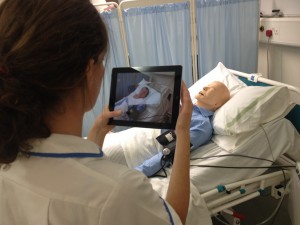This is the second of three blogs from my opening address to Hallam staff. In it I set out some of the challenges the University faces.
Universities may be becoming more and more important in economies, society and culture. But there’s a price: as they do, expectations and demands on them become greater. We can see that every day in terms of rising expectations – the rising expectations of students, who now bear almost all of the direct costs of studying in most subjects, the expectations of their parents and families, whether in Sheffield, Rotherham and Doncaster or Singapore, Raipur or Dezhou. We see it in the expectations of scholarship funders and research sponsors, industry partners and local politicians. We see it in the student who demands more, and quicker feedback, who demands a higher-quality placement, who demands success as well as experience. We see it in the increased focus on quality – measured by league tables, however flawed they may be. Universities are more important – and they are expected to deliver more. That demand is not going away; in fact, we can expect it to intensify.
And at the same time, universities are becoming more competitive – operating in ever more competitive markets, trying to find niche advantages to secure their position. It’s true nationally and internationally. It leads to pressure on the estate, learning resources and teaching, on programme development and research dissemination. It feeds through to competition for international students. It means that we have to get our offer right, pitch it well and look hard at our competitors. At a time of flat or declining public investment – that makes for tough challenges.
Beyond this, universities are working their way through the continuing technological revolution. This revolution means any of us can access, test and disseminate information from almost anywhere in the world. It is collapsing the distinctions between teaching and learning, between face-to-face and distance learning. SHU is a leader in the application and use of social media in teaching. Some of the innovations I have seen are genuinely sector-leading – but we have to get the technological revolution and our response to it right, not in specific local parts of what we do, but across the University.
And there is the tension which arises from all this – the tensions which arise from the triple focus on students – our immediate clients and stakeholders; on the city and region – which is so important to our DNA and our impact; and on the wider world, the world for which we are preparing our students and in which we operate as a globally-engaged University.
I could talk about versions of these challenges anywhere in the world. They would look pretty familiar at any university. They are the backdrop to the future of higher education – quality, competition, technology and focus. But they are set into relief by some of the immediate challenges for the University – the day-to-day things we have to understand and get right.
The first is the shifting policy context, and the Higher Education Green Paper in particular. The Green Paper is designed to sharpen competitive pressures on UK universities in three main ways. It will introduce a Teaching Excellence Framework along the lines of the Research Excellence Framework. The TEF will not only impact on our reputation, but is also likely to impact on our income. The Green Paper will reshape research funding priorities more tightly around government priorities, through the development of an overarching Research UK board. And – perhaps more important than the TEF – it will encourage new providers into the HE market.
The second is our admissions position. We operate in the middle of the UK market. In parts of our market we face tough choices to secure our position. Our provision is often complex and in some parts we may be competing against ourselves. And all this matters more because for the next six or seven years, there will be a sharp fall in the number of 18-year-olds in the country.
The third is our research performance. In quality, SHU did well in the 2014 REF, though on a weak entry base. But research income – which is the main overall driver of REF performance – is relatively low and it is falling.
The fourth is our place in the city and region. This, above all, is Sheffield’s University. But we face some pressing challenges: both from the other university in the city, developing its local role through its manufacturing park and its creative engagements, and from other regional universities who are developing presence in some of the local towns and cities who should be looking to us.
The fifth is our exposure to some fragile international markets, where price competition is difficult and quality often at risk, and where the risks of failure are high – although the risks of non-engagement are just as high.
And finally, there is the financial squeeze. Our major income stream comes from undergraduate fees – where the £9,000 fee is fixed with no indexation but our costs are rising. Our ability to plot a successful future, to invest in the things which will meet the other five challenges, depends on our ability to operate at surplus in some very tight markets.
These are challenges distinctive to Hallam – our local versions of the major global drivers. And they are making our life more challenging, with resource tighter and expectations higher in the next ten years than in the last five. In the blog next week I will set out some immediate priorities.
